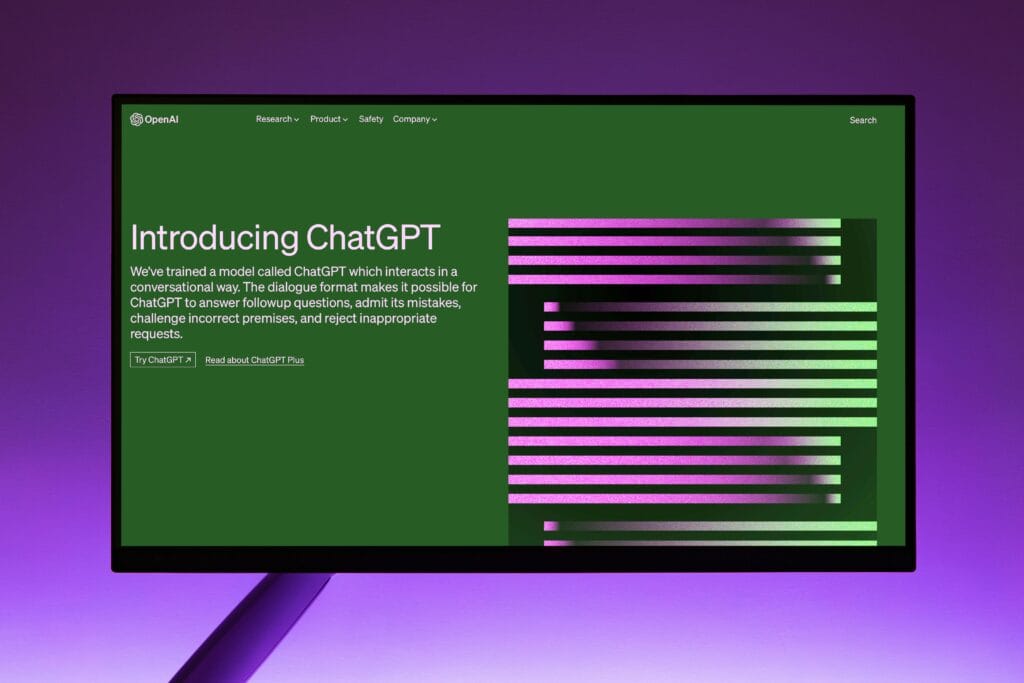INTRODUCTION
“Computerized reasoning (simulated intelligence) chatbots have changed how organizations and people communicate with innovation. From robotizing client care to smoothing out business processes, chatbots controlled by computer based intelligence are upgrading client encounters across numerous enterprises. Whether you’re hoping to fabricate a chatbot for client care, diversion, or efficiency, this guide How to Build AI Chatbots: A Comprehensive Guide—will walk you through the most common way of making a profoundly productive man-made intelligence chatbot.”

Table of Contents:
- What is an AI Chatbot?
- Benefits of AI Chatbots
- Types of AI Chatbots
- Steps to Build an AI Chatbot
- Step 1: Identify the Use Case
- Step 2: Choose a Platform
- Step 3: Design the Conversational Flow
- Step 4: Integrate Natural Language Processing (NLP)
- Step 5: Train the Chatbot
- Step 6: Test and Improve
- Step 7: Deploy the Chatbot
- Best Practices for AI Chatbots
- AI Chatbot Use Cases
- Conclusion
1. What is an AI Chatbot?
A reproduced knowledge chatbot is an item application that impersonates human conversations through text or voice associations, using normal language dealing with (NLP) and computer based intelligence estimations. Not the slightest bit like rule-based chatbots, man-made knowledge chatbots can acquire from conversations, handle client assumption, and give significant responses. These chatbots can be tracked down in destinations, illuminating applications, and client help doorways, outfitting clients with consistent assistance or information.
2. Benefits of AI Chatbots
AI chatbots bring numerous advantages to businesses and users, such as:
- 24/7 Availability: AI chatbots work continuously without breaks, providing round-the-clock customer support and engagement.
- Cost Efficiency: Automating repetitive tasks with chatbots reduces the need for human support agents, saving costs.
- Personalized User Experiences: With machine learning, chatbots can provide personalized responses based on past interactions, increasing customer satisfaction.
- Improved Scalability: Chatbots can handle multiple conversations simultaneously, making them scalable and effective even during peak times.
- Enhanced Data Collection: Businesses can gather valuable user data and feedback to improve their services.

3. Types of AI Chatbots
Before building your chatbot, it’s essential to understand the two main types of AI chatbots:
- Rule-Based Chatbots: These chatbots work on predefined runs and are great for taking care of clear, tedious assignments. They offer restricted discussion ways and are fundamentally utilized in client assistance or for noting FAQs.
- AI-Powered Chatbots: These high level chatbots use AI and NLP to grasp client plan, decipher complex inquiries, and give proper reactions. Computer based intelligence controlled chatbots work on over the long haul as they are presented to additional communications.
4. Steps to Build an AI Chatbot
Step 1: Identify the Use Case
The first step in building an AI chatbot is defining its purpose. A chatbot can be designed for various functions, including:
- Customer support: Handling queries, resolving issues, and providing assistance.
- Lead generation: Collecting user information and qualifying leads.
- E-commerce: Assisting customers with product recommendations, order tracking, and more.
- Entertainment: Providing games, fun facts, or interactive experiences.
Clearly define the use case of your chatbot to tailor its design, functionality, and training process.
Step 2: Choose a Platform
There are several platforms you can use to build and deploy your AI chatbot, including:
- Microsoft Azure Bot Service: Offers tools for building AI chatbots with NLP capabilities.
- Dialogflow: A platform by Google that provides pre-built integrations with NLP and speech recognition.
- IBM Watson: Known for its robust AI capabilities, Watson allows for building highly sophisticated chatbots.
- Rasa: An open-source platform offering flexible, customizable chatbot frameworks.
- Chatfuel and ManyChat: No-code platforms designed for building chatbots on Facebook Messenger.
Choosing the right platform will depend on your requirements, technical expertise, and the kind of experience you want to deliver.

Step 3: Design the Conversational Flow
The chatbot’s conversational flow defines how the user interacts with it. Start by creating a detailed script outlining possible user questions and corresponding responses. This flow should cover:
- Greeting and onboarding: Welcome the user and guide them on how to use the chatbot.
- Core interactions: Based on the chatbot’s purpose, decide how it will handle questions, give information, and engage users.
- Error handling: Prepare fallback responses for when the chatbot doesn’t understand a query. For instance, “I’m sorry, I didn’t catch that. Could you rephrase?”
- Closing the conversation: Decide on how to end the interaction, either by completing the task or redirecting the user to human support.
Use tools like Lucidchart or Draw.io to visually map out your chatbot’s conversational paths.
Step 4: Integrate Natural Language Processing (NLP)
NLP is the foundation of any artificial intelligence chatbot. It permits the chatbot to figure out human language, distinguish the client’s purpose, and give exact reactions. Most computer based intelligence chatbot stages have implicit NLP motors that improve on this interaction.
Key NLP components include:
- Intent Recognition: Recognizes what the client needs to achieve. For instance, if a client types, “I really want to book a flight,” the chatbot recognizes the objective as “flight booking.”
- Entity Recognition: Extracts relevant data from the user input, such as dates, times, locations, and product names.
- Context Management: Keeps track of the conversation’s context to provide coherent and contextual responses.
Step 5: Train the Chatbot
After defining the conversational flow and integrating NLP, the next step is to train the chatbot. This involves feeding the chatbot with data and allowing it to learn from it. You can start with:
- Training datasets: These are sets of user queries and responses that help the chatbot learn how to answer questions.
- Supervised learning: The chatbot is given labeled data where the correct answers are predefined, allowing it to understand the structure of conversations.
- Unsupervised learning: In this case, the chatbot analyzes conversations to detect patterns without predefined answers.
The more interactions the chatbot has, the better it becomes at understanding and responding accurately.
Step 6: Test and Improve
Before launching your chatbot, you must thoroughly test it across different scenarios. Engage beta testers or run a pilot to identify areas where the chatbot can improve. Look for:
- Accuracy: Ensure the chatbot correctly identifies user intent and provides relevant responses.
- Speed: Test how quickly the chatbot processes queries and responds.
- Handling edge cases: Make sure the chatbot can handle unexpected inputs or unusual queries.
Use feedback from users to fine-tune your chatbot, optimizing its performance and conversational abilities.
Step 7: Deploy the Chatbot
Once your chatbot has been tested and refined, it’s time to deploy it. Depending on your platform, you can integrate your chatbot into websites, mobile apps, or messaging platforms like WhatsApp, Facebook Messenger, and Slack.
Some platforms even allow you to deploy the chatbot on multiple channels simultaneously, ensuring you reach a wider audience.
5. Best Practices for AI Chatbots
To ensure your AI chatbot is effective, follow these best practices:
- Keep Conversations Simple: Don’t overwhelm users with complex language or too many options at once.
- Always Have a Human Option: Allow users to escalate to a human agent if they need further assistance.
- Continuously Improve: Regularly update your chatbot with new data, feedback, and features.
- Be Transparent: Clearly inform users that they are interacting with a chatbot, and provide information on how it works.
- Optimize for Mobile: Ensure that your chatbot works seamlessly across different devices, especially mobile phones.
6. AI Chatbot Use Cases
AI chatbots can be used across various industries:
- Retail and E-commerce: Assisting customers with product recommendations, purchase tracking, and support.
- Healthcare: Chatbots can schedule appointments, answer FAQs, and even provide symptom analysis.
- Banking: Assisting customers with account management, transfers, and fraud detection.
- Travel and Hospitality: Helping customers book trips, offer recommendations, and provide travel updates.
- Education: AI chatbots can act as virtual tutors, guiding students and answering educational queries.

7. Conclusion
Building an artificial intelligence chatbot may appear to be perplexing, however with the right methodology and devices, it can altogether upgrade your business activities and client connections. By understanding your utilization case, planning areas of strength for a stream, utilizing NLP, and constantly working on through input, you can make a chatbot that is both utilitarian and locking in.
With the ascent of simulated intelligence and the rising interest for moment, customized client care, making an artificial intelligence chatbot is an interest in store for advanced association. Whether for client care, promoting, or even amusement, simulated intelligence chatbots are turning into a vital piece of current business systems.
If you want to read our more blogs Click “Here“
We have another website about Fashion must visit Click “Here“

